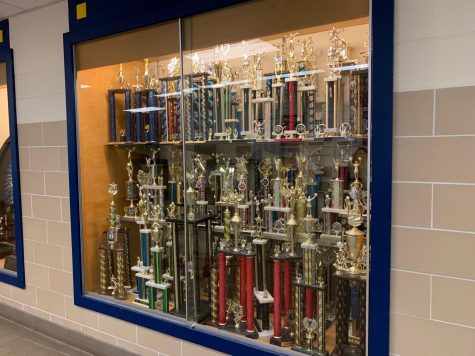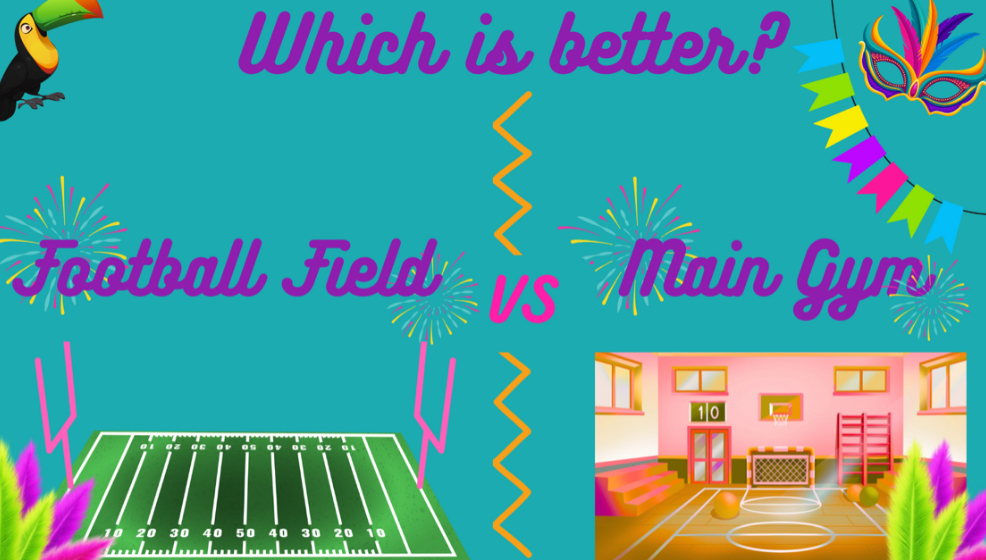Insight on what excites students
How student passions turn into reality
February 22, 2019
A lot goes into making a school everything it is. Academics are one thing, but sports and activities are a whole other ball game. Although it seems natural to have a football team, dance team, and speech club, determining the sports and activities this school has is a bigger feat than what meets the eye. It also has a lot to do with student interest.
With an athletic budget of $1.2 million and activity budget of roughly $210,000, funding is a huge part of keeping each extracurricular going. Though these budgets seem large, they vary year to year based on the needs of the club.
For example, football is the biggest sport with approximately 100 students involved each year. The budget for this club is a lot more hefty than boys or girls golf. Because of this, the extracurriculars are financed proportionally to the number of people participating in the activity
Though the athletic budget is vastly different from the activities budget, there is a reason behind it. Teams need to be transported to their various competitions, referees need to be hired, and the stands need to be set up before the big Friday night basketball game. Not to mention, uniforms and repairments to the fields and courts, add to the cost.
So how exactly does the school have all of these extracurriculars?
The school has added four to five sports during the last ten years, including girl’s badminton and boys lacrosse during the 2017-2018 school year. The addition of new sports, like badminton and lacrosse are a result of a lengthy and intense process. The main factor in determining whether something should become a sport, or not, is student interest.
Athletics Director John Young explains, “For the past 20 years, we have been doing an assessment of interest levels for all sports. Every five years, a survey is sent out to all of the freshman, sophomores, and juniors to show the interest levels for on the following years.”
The community has expressed a continuous interest in lacrosse for the past years, but its addition was halted by the need for a complementive girl’s sport. All public schools are required to Title XI, a federal civil rights law which bans the discrimination in athletics on the basis of sex passed as part Education Amendments Acts of 1972. This is where badminton comes in to the picture.
The survey for athletics and activities sent out in 2014 revealed a high interest level for girl’s badminton. This served a perfect complimentary sport for lacrosse, because it is also considered a racquet sport.
The next survey, for athletic and activity interests, will be sent to the freshman, sophomores, and juniors in 2019.
Not every suggestion ends up becoming an official activity at the school. Girls gymnastics has been trying to become a sport for the past several years, but due to their scarce student interest they are only able to be a school-sponsored club.
This still allows them to compete under the school, but as individuals, not as a team. Young said, “Gymnastics is not something we had to do, but we had interest, so we found a way for them to compete.”
Anyone is able to start their own club as long as they have the numbers. Assistant Activities Director Matt Doherty said, “A club needs to service our students and meet a school need while impacting the community.”
On top of this, there must be a sponsor and roughly 15 or more students involved. However, quantity is sometimes not as important as a quality.
The impact of the club in question is also considered before it’s addition. If the club in question has the potential to cause conflict and drive students away from a preexisting club, it will not be created. For example, students several years ago wanted to start a debate club, but it started to divert students away from speech team.
If you have a passion for something and want to make it a club for students, speak with Mr. Doherty for further details.

A variety of trophies from different sports give just a taste of the school’s extracurricular excellence. The trophies are a reflection of the intensive work and passion that goes into athletics and activities.







